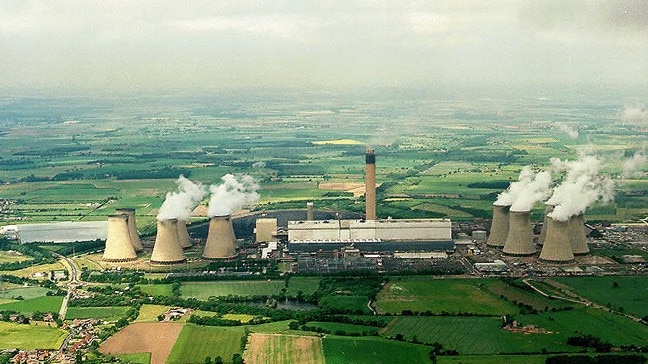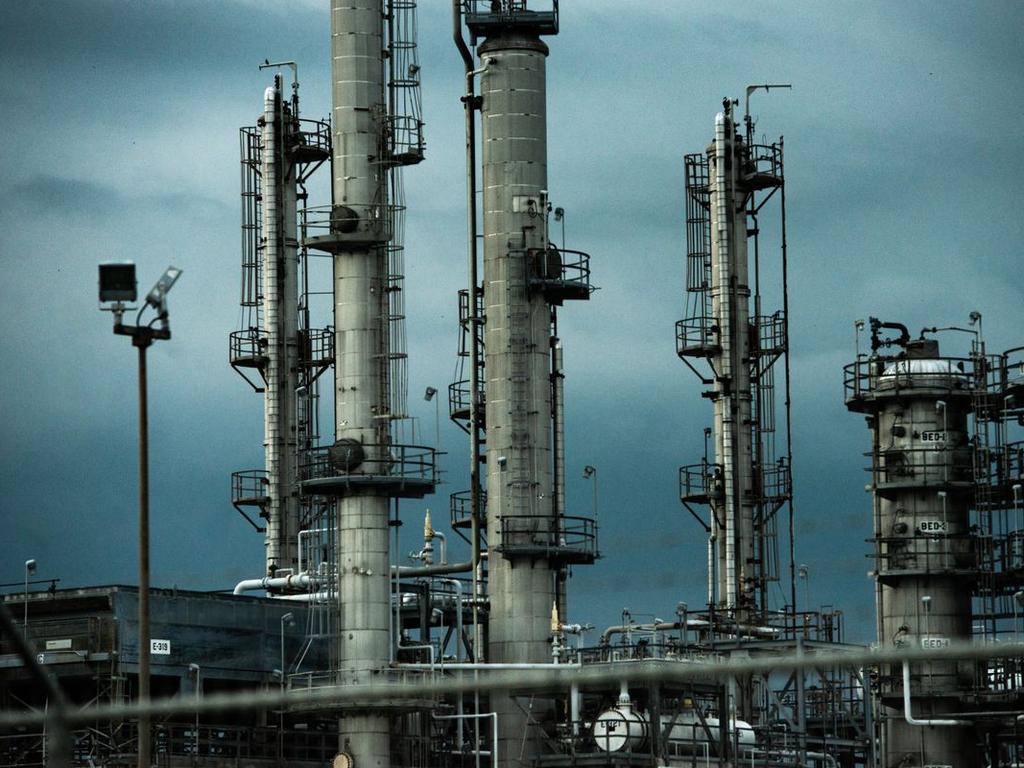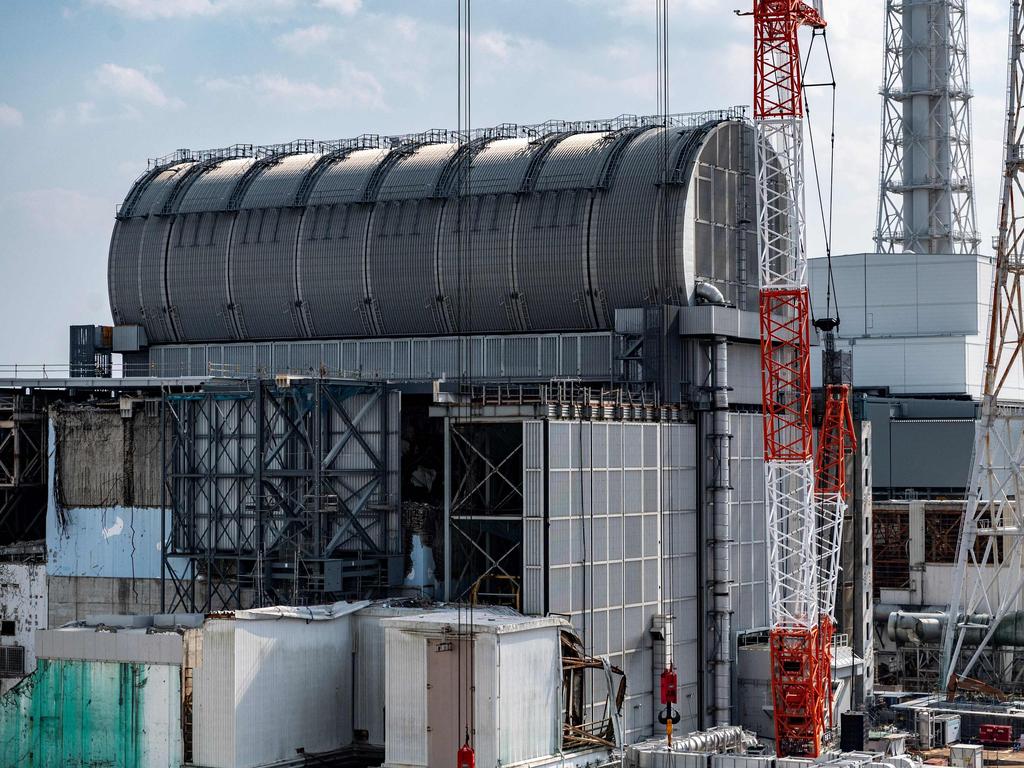A shocking glimpse of renewables power future
If we want electricity, as Britain has shown so emphatically this last week, it has to come, it can only come, from coal, from gas and from nuclear.

That’s if that future is supposed to be –—pardon my laughter — “powered” by so-called renewables, wind and solar, even with “batteries included” and even more emphatically without.
Remember last year when I told you how our duo of twittering former prime ministerial twerps, Malcolm the Turncoat and Kevin the hero of Copenhagen, were almost orgasmic at the — you’ll have to pardon my laughter again — “news” from the BBC and the Guardian that Britain was powering away without coal?
Rudd, as befits his boyish — or should I say, non-gender specifically, childish? — enthusiasms, gushed “for anyone who thinks it cannot be done: the UK has not produced any electricity from coal for the last two months — the longest period since the Industrial Revolution. Let that sink in.”
Well, what did sink and sink almost immediately, back then in June, was the expectation expressed by a spokesman for the UK National Grid no less, of not planning to turn a coal generator on “anytime soon”.
Within a week, coal was generating again, and on and off in Britain it’s kept generating since; on top of a lot and I mean a lot of burning gas, pumping out plenty of plant food gaily daily.
Then we come to this week. For two full consecutive days through Wednesday morning, Britain was not only getting some power from coal, it was getting two to three times from coal what it was getting from all its wind turbines.
For most of those two days, all those, quaintly named, turbines scattered across Britain and around its coast were producing just 2-4 per cent of power demanded.
If Britain had reached its glorious target of going so-called 100 per cent renewable, it would literally have had to turn off not just all the heating to homes and power to factories, but the very lights in every home.
For two entire consecutive days, those British turbines which can produce as much as 13,000MW — when the wind chooses to blow — were producing on average between 500MW and 800MW.
That’s to say, in a country where users can demand 40,000MW through most of the day, effectively zero and all-but utterly useless.
For those two days Britain was getting anywhere between two to four times from coal generators as it was getting from wind, with coal generation averaging around 1600MW-1850MW over the 48 hours. That’s to say, a closed Hazelwood or about-to-close Liddell.
It’s important to add that Britain was getting a further 2700MW from the cutely, all touchy-feeling named biomass through those two days.
As I’ve previously explained, so-called biomass is a return to a pre-coal future, burning wood: in Britain’s case, burning woodchips, mostly shipped in from across the Atlantic in oil-fired ships into what was formerly a coal-fired power station called Drax.
And in the process, pumping even more CO2 into the atmosphere than was previously the case from the coal.
So for those days, Britain was getting around 500MW-700MW from wind and six to nine times more, around 4300MW-4600MW from coal and what I would more accurately term, in dark Green eyes, “dirtier-than coal” woodchips.
Britain was getting as much as 24,000MW from gas — cough, cough, a fossil fuel, and the last time I looked, pumping out CO2 — and around 4000MW from nuclear.
Take one day in Britain: around 72 per cent of electricity from burning stuff and pumping CO2 — gas, coal and wood; and a further 11 per cent from nuclear which does not but is equally as wicked.
Just 1.5 per cent was coming from wind, all day. Oh yes, and another 1 per cent from those “included batteries” — pumped storage — and another 1 per cent from hydro.
Add all that up and you only get to around 87 per cent. Thank goodness for the extension cords. Britain was getting over 13 per cent of power for a whole day from France (nuclear), The Netherlands (coal and gas) and Belgium (gas and nuclear).
By the bye, in our all-renewables future, who are we going to plug our extension cords into?
So for Britain, which is committed to 100 per cent electricity from so-called renewables, it was getting over 95 per cent of its power from burning stuff and pumping CO2 (77 per cent) and nuclear (18 per cent).
You could double the number of turbines that Britain already has — and which in its collective national insanity and straight out stupidity, it supposedly actually intends to do — and you would get exactly the same result when the wind don’t blow: close to zero power. OK, maybe 1000MW (out of 40,000MW needed) instead of only 500MW.
There is no way, even in energy insanity, that you can build enough batteries to make up the difference, and to make it up for at least 24 hours — far less, who knows, 48 hours, or indeed 72 hours or maybe a whole week? — and not just for an hour or two.
To say nothing of the massive environmental damage, including pumping a lot of CO2 to build the damn things, you embark on when you dig up lithium and build those batteries.
And just exactly where are they going to be disposed, when they stop recharging? Next to all the similarly clapped out wind turbine blades, which last only 15 or so years, no doubt.
If the future is renewables, it is a literally powerless future.
I still have a dream. That one day we will wake up from this insane, emperor-has-no-clothes nightmare and start tearing down those useless other than for slaughtering birds monstrosities, and shattering their equally useless bird-frying siblings.
If we want electricity, as Britain has shown so emphatically this last week, it has to come, it can only come, from coal, from gas and from nuclear.
All else is childish, destructive — Rudd-Turnbull-style — fantasy.






I have seen the future and — to disagree with the late and anything but great American journalist and communist dupe Lincoln Steffens — it most definitely does not work.